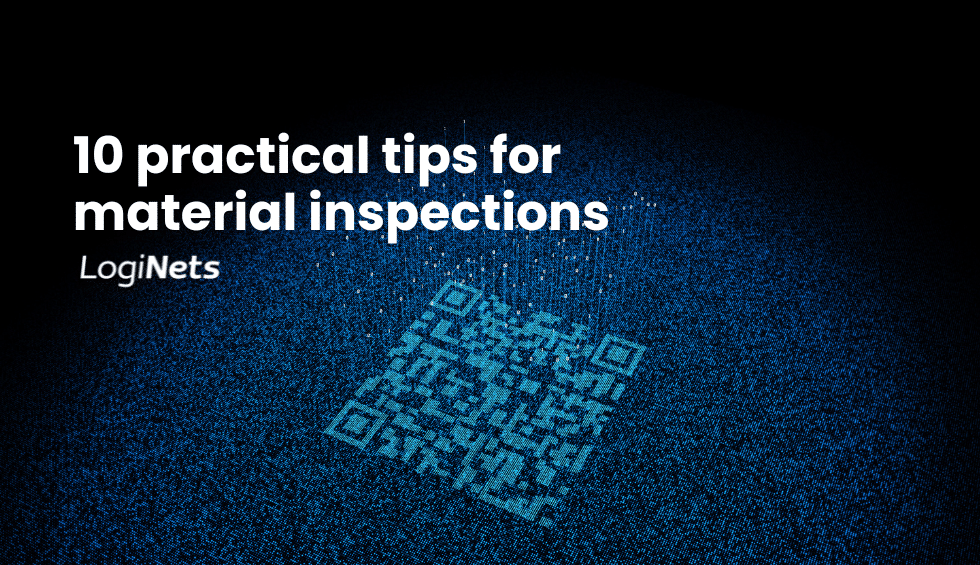Inspection of materials
Large capital projects typically have deliveries from tens or even hundreds of suppliers. With large amounts of materials arriving on site, efficient quality inspection of arrived goods is critical in ensuring the success of large industrial projects. Here are 10 practical tips to handle this process effectively, ensuring consistency in your quality checks, and allowing a prompt response to any issues that arise.
1. Develop a Standardized Inspection Protocol
Create a standardized inspection protocol that includes specific criteria for each type of item received (pumps, electric motors, valves, prefabricated pipes). This protocol should detail the inspection steps, acceptance criteria, and documentation requirements. A standardized approach ensures consistency in quality checks, reduces errors, and speeds up the inspection process by setting clear expectations for inspectors.
2. Train Inspection Teams Thoroughly
Train your inspection teams on the specifics of the industrial items they will be inspecting, including how to identify common defects and the proper use of inspection tools. Comprehensive training ensures inspectors are knowledgeable about the products and can efficiently spot any deviations or defects, leading to more accurate and reliable inspections.
3. Utilize Technology for Inspection and Reporting
Implement digital tools and software for inspection of materials reporting and data collection. Utilizing technology such as QR codes for scanning arriving products streamlines the process. By performing the entire inspection process digitally, it reduces paperwork, and allows for real-time tracking of inspection results. It also facilitates easier sharing of findings with project managers and suppliers, enabling quick actions on any issues identified.
4. Engage with Suppliers Pre-Delivery
Collaborate with suppliers before delivery to understand their quality control processes and to communicate your project’s specific requirements. Establishing a good relationship with suppliers and having a mutual understanding of quality expectations can help prevent issues and ensure the goods meet your standards upon arrival.
5. Conduct Pre-Receipt Risk Assessments
Perform risk assessments on incoming shipments to prioritize inspections based on potential risk factors, such as the item’s criticality to the project timeline, past performance of the supplier, or known issues with specific types of equipment. This allows you to allocate inspection resources more effectively by focusing on higher-risk deliveries.
6. Implement a Systematic Receiving Process
Ensure there is a systematic process in place for receiving goods, which includes checking the shipment against the purchase order for accuracy, documenting the condition of items upon arrival, and timely scheduling of quality inspections. A well-organized receiving process is crucial for tracking and maintaining control over the quality inspection workflow.
7. Schedule Regular Calibration of Inspection Tools
Maintain the accuracy of measurement and inspection tools through regular calibration. Accurate tools are essential for precise inspections, especially when verifying the dimensions and tolerances of mechanical components like valves and prefabricated pipes. This prevents incorrect acceptance or rejection of goods based on faulty measurements.
8. Establish Clear Communication Channels
Set up clear and efficient communication channels between the inspection team, project management, and suppliers. This ensures that any issues found during the inspection can be quickly communicated and addressed, minimizing delays in the project timeline and facilitating prompt corrective actions.
9. Adopt a Continuous Improvement Mindset
Use the findings from inspections to feed into a continuous improvement program. Analyze the data collected from inspections to identify trends or recurring issues, and work with suppliers to implement corrective actions. This approach helps in reducing defects over time and improves the overall quality of goods received.
10. Create a Feedback Loop with Suppliers
Develop a feedback loop with suppliers where inspection results, including any non-conformances, are shared and discussed regularly. This collaborative approach encourages suppliers to continuously improve their processes and products, leading to better quality deliveries in the future.
Efficient Inspections of materials for a Successful Industrial Project
In conclusion, efficient quality inspection of arrived goods is indispensable for the success of large industrial projects. By following the ten practical tips outlined above, project managers and inspection teams can streamline the inspection process. By implementing these strategies, industrial projects can minimize risks, optimize efficiency, and uphold the highest standards of quality throughout the inspection process.
Want to find out how the MHS software could help you efficiently inspect materials on site? Get in touch!

Did you enjoy this post? You might also be interested in our blog posts on


